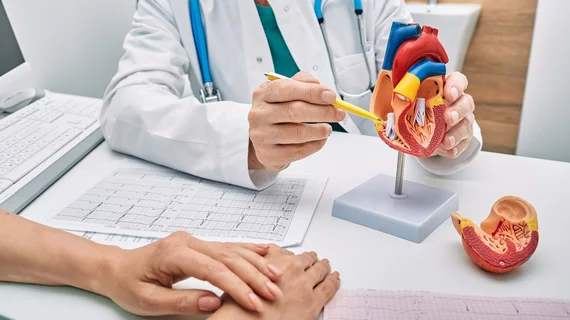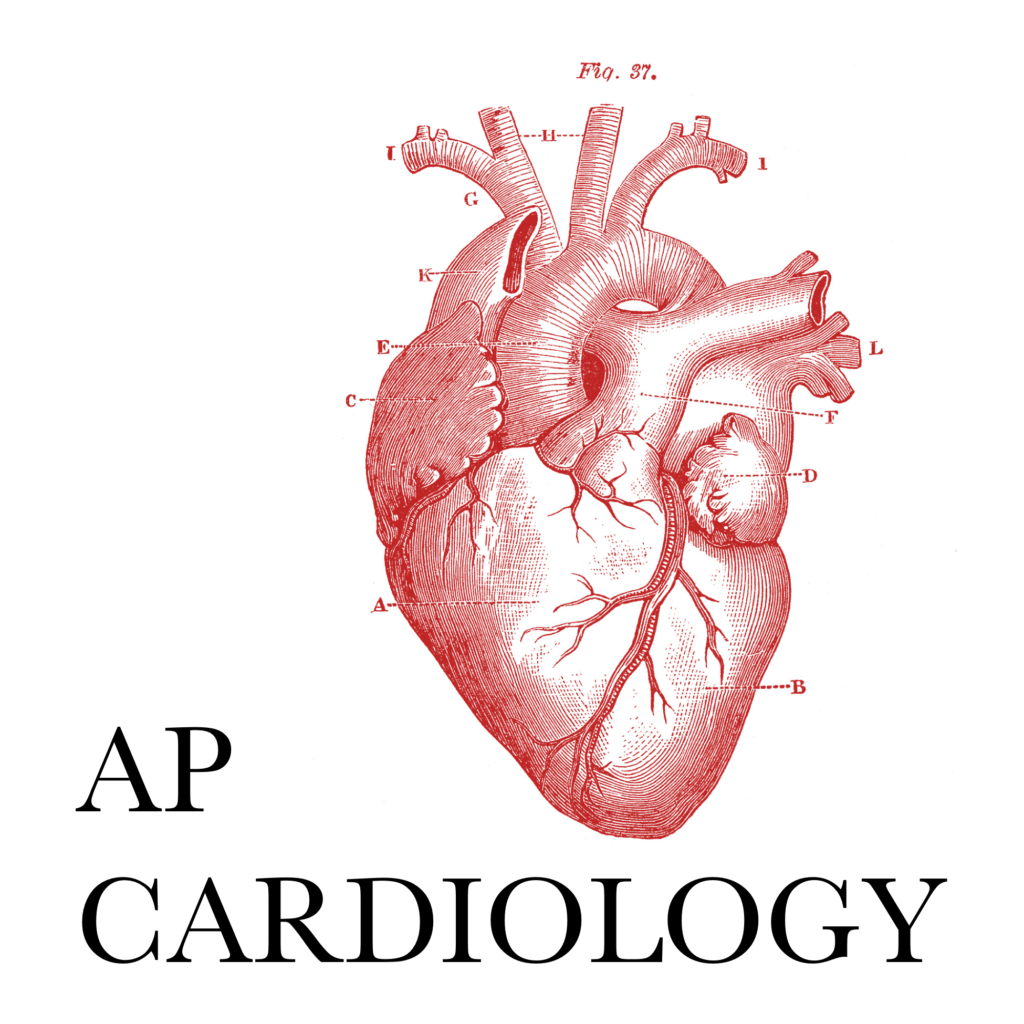How Cardiology care shields your cardiovascular health long-term
Recognizing the Significance of Cardiology in Modern Medical Care Providers
Cardiology plays a crucial role in modern-day health care, especially as cardiovascular disease remains to be the leading reason for death worldwide. Advancements in diagnostics and treatment have actually changed individual care, allowing earlier treatments and enhanced results. Additionally, the change in the direction of precautionary cardiology equips individuals to manage their wellness proactively. As innovation continues to evolve, the assimilation of cutting-edge options may further redefine cardiology's influence on public wellness, triggering a closer assessment of emerging trends and their effects.
The Occurrence of Cardiovascular Disease and Its Influence On Public Wellness
Heart disease continues to be the leading cause of fatality around the world, its effect prolongs far past private people to impact public health and wellness systems and economic climates. The high prevalence of heart problem puts a significant stress on medical care sources, requiring raised funding for recovery, prevention, and therapy programs. Public health and wellness campaigns must attend to threat aspects such as weight problems, smoking, and less active lifestyles, which add greatly to the rising occurrence of heart conditions.Moreover, the financial burden connected with cardiovascular disease is tremendous, encompassing not only straight clinical costs but likewise indirect costs connected to shed performance and premature mortality. Neighborhoods encounter obstacles in managing these costs, typically causing differences in medical care access and outcomes. As the population ages and lifestyle-related risks remain to escalate, the urgency for reliable cardiology interventions becomes critical. Dealing with heart illness is not just a matter of specific wellness however likewise a vital public health and wellness priority.
Advances in Heart Diagnostics and Imaging Techniques
Current developments in cardiac diagnostics and imaging strategies have actually reinvented the field of cardiology, enhancing the ability to check and identify cardiovascular disease. Methods such as heart MRI, CT angiography, and echocardiography have actually come to be progressively advanced, supplying thorough photos of cardiac structures and functions. These methods permit the early recognition of conditions like coronary artery condition, cardiac arrest, and valvular disorders.Moreover, developments in non-invasive diagnostics, such as wearable technology and remote tracking devices, have actually empowered people and health care companies. These devices help with real-time monitoring of heart rhythms and other crucial indications, leading to timely treatments. Furthermore, artificial intelligence is being integrated right into imaging evaluation, enhancing precision and performance in diagnosis.
Technologies in Treatment Alternatives for Heart Conditions
Recent developments in cardiology have brought about considerable innovations in therapy options for heart problems. These consist of advanced surgical strategies that enhance procedural results and arising medications that provide brand-new methods for therapy. As the field progresses, these innovations play a crucial duty in improving individual treatment and end results.
Advanced Surgical Techniques
Innovations in surgical techniques have changed the landscape of cardiology, supplying brand-new hope for clients with heart disease. Minimally intrusive treatments, such as catheter-based interventions, have actually substantially lowered recovery times and medical facility remains. Methods like robotic-assisted surgical treatment enhance precision, enabling specialists to browse intricate physiological frameworks with greater precision. Advancements in imaging technology help with real-time visualization throughout procedures, improving outcomes. Transcatheter aortic shutoff replacement (TAVR) exhibits a breakthrough in dealing with aortic stenosis, making it possible for valve substitute without open-heart surgical treatment. Additionally, hybrid techniques that integrate surgical and catheter-based approaches offer tailored remedies for various heart issues. These sophisticated medical strategies not only improve person safety yet additionally broaden therapy options, underscoring the critical role of technology in modern-day cardiology techniques.
Arising Drugs and Treatments
As the landscape of cardiology proceeds to progress, arising treatments and drugs play an essential function in improving treatment choices for heart conditions. Developments such as novel anticoagulants and advanced lipid-lowering representatives have changed the management of cardiovascular diseases, substantially decreasing individual morbidity and death. Additionally, the growth of genetics treatments and regenerative medicine uses encouraging methods for treating problems previously regarded incurable. Clinical trials are continuously disclosing the efficacy of these treatments, pushing the boundaries of traditional therapies. Moreover, the assimilation of digital health innovations facilitates individualized medicine, allowing for tailored treatment strategies based on genetic and way of living factors. Collectively, these developments highlight the dynamic nature of cardiology, boosting client outcomes and redefining requirements of treatment in modern healthcare.
The Role of Preventive Cardiology in Person Care
Preventive cardiology plays a necessary role in person care by focusing on the identification of threat aspects that add to heart problem. Via way of life modification approaches and very early detection strategies, doctor can effectively minimize the incidence of cardiovascular occasions - Cardiology care. This aggressive technique not just boosts client results but likewise promotes lasting health and wellness
Danger Factor Identification
While heart diseases continue to be a leading reason for morbidity and death worldwide, effective threat factor identification functions as a foundation of precautionary cardiology. Determining danger aspects such as high blood pressure, hyperlipidemia, diabetes mellitus, and family members background is essential for early intervention. Health care professionals use various screening approaches to review these variables, permitting tailored precautionary measures. Additionally, comprehending an individual's lifestyle selections, such as smoking cigarettes and physical inactivity, further educates threat assessments. This complete analysis allows medical professionals to establish individualized treatment plans aimed at mitigating risks. By focusing on risk aspect identification, healthcare systems can enhance client outcomes and reduce the total problem of heart diseases, inevitably adding to enhanced public health and wellness approaches and resource appropriation.
Way Of Living Adjustment Strategies
A wide range of researches highlights the critical function of way of life adjustment methods in minimizing cardio condition threat. These strategies encompass nutritional modifications, enhanced exercise, smoking cigarettes cessation, and weight monitoring. By taking on a heart-healthy diet plan abundant in fruits, veggies, entire grains, and lean healthy proteins, people can lower cholesterol degrees and blood stress. Routine exercise reinforces the heart and enhances general cardio health. In addition, giving up smoking considerably lowers the danger of cardiovascular disease and boosts recovery rates for those with status quo. Weight monitoring additionally contributes to cardiovascular health by minimizing various other danger variables such as diabetic issues and high blood pressure. Applying these way of living alters not just promotes specific well-being yet likewise serves as a keystone of precautionary cardiology in patient treatment.
Very Early Discovery Strategies
Lifestyle alterations significantly add to minimizing cardio condition risks, but they are most effective when combined with very early detection techniques. Preventative cardiology stresses the significance of identifying prospective heart issues prior to they rise right into severe conditions. Strategies such as blood pressure surveillance, cholesterol testing, and progressed imaging modern technologies like echocardiograms play critical roles in assessing cardiovascular wellness. Biomarkers and genetic testing also improve the precision of early detection, enabling tailored preventive strategies. Normal cardiac threat examinations encourage doctor to step in proactively, possibly preventing cardiac arrest and strokes (Cardiologist near me). By incorporating these early detection techniques right into routine browse around this site care, clients can profit from timely way of living interventions and targeted treatments, ultimately enhancing and boosting end results lifestyle
Integrating Innovation Into Cardiology Practices
As advancements in innovation continue to improve various fields, the combination of innovative devices and systems into cardiology practices has actually ended up being crucial for enhancing patient care and outcomes. Telemedicine systems permit cardiologists to keep an eye on individuals from another location, improving access to care while minimizing the worry on health care facilities. Wearable tools, such as smartwatches, make it possible for constant heart rate surveillance, notifying both medical professionals and people to potential concerns in real-time. In addition, man-made knowledge (AI) is being utilized to assess vast amounts of heart information, assisting in early medical diagnosis and individualized treatment plans. Advanced imaging methods, consisting of 3D echocardiography, boost visualization of heart structures, bring about much more precise interventions. Digital health and wellness records (EHRs) enhance person details management, making certain that cardiologists have immediate access to important information. With each other, these technological advancements are changing cardiology, promoting positive monitoring and boosted health and wellness outcomes for clients with cardiovascular conditions.
The Importance of Person Education And Learning and Involvement
Client education and learning and interaction play a pivotal role in the management of cardio wellness. By gearing up clients with expertise concerning their conditions, therapy alternatives, and lifestyle adjustments, doctor encourage people to take an active function in their treatment. This positive method can bring about improved adherence to recommended medicines, nutritional modifications, and workout routines, eventually decreasing the threat of complications.Engagement likewise fosters a solid patient-provider connection, encouraging open communication and depend on. When individuals really feel notified and entailed, they are more probable to voice concerns and ask concerns, which can cause better scientific results. Furthermore, instructional resources, such as workshops or digital systems, can improve understanding and advertise self-management techniques. Generally, prioritizing patient education and learning and involvement is crucial for improving cardio health and wellness, enhancing top quality of life, and minimizing medical care prices connected with heart diseases.
Future Patterns in Cardiology and Their Possible Effect

Regularly Asked Concerns
What Lifestyle Changes Can Lower Heart Condition Risk?
The current inquiry addresses way of life changes that can substantially lower heart illness risk. Cardiology Jupiter. Adopting a well balanced diet, involving in routine physical activity, keeping a healthy weight, managing stress and anxiety, and preventing tobacco can significantly improve cardio health
Exactly How Can I Recognize Very Early Signs of Heart Problems?
Recognizing very early signs of heart troubles involves surveillance symptoms such as breast pain, shortness of breath, exhaustion, and irregular heart beat. Timely understanding of these indications can prompt essential medical examination and intervention for much better end results.
What Are the Differences Between Cardiologists and Cardiac Surgeons?
The distinctions between cardiologists pop over here and cardiac doctors depend on their functions; cardiologists largely diagnose and handle heart conditions through non-invasive techniques, while heart doctors carry out surgeries to deal with structural heart problems. Each plays a crucial, distinctive role.

How Often Should I Obtain My Heart Health And Wellness Checked?
The frequency of heart medical examination differs based on private threat aspects. Normally, adults need to go through assessments each to two years, while those with existing problems may need more frequent analyses as encouraged by healthcare specialists.
What Role Does Genes Play in Heart Illness Threat?
Genetics greatly affects heart problem threat, with familial patterns showing inherited problems. Specific genetics can predispose individuals to high blood pressure, cholesterol issues, and various other cardiovascular issues, highlighting the importance of hereditary testing in assessing heart wellness. Heart disease continues to be the leading cause of death around the world, its effect expands far beyond private patients to influence public health systems and economic climates. Public wellness initiatives need to address danger elements such as excessive weight, smoking, and inactive way of livings, which contribute significantly to the climbing occurrence of heart conditions.Moreover, the economic concern connected with heart condition is immense, encompassing not only straight clinical prices yet likewise indirect expenses connected to shed performance and premature mortality. Preventive cardiology plays a necessary check that duty in person care by focusing on the identification of risk elements that contribute to heart illness. Man-made knowledge (AI) and equipment understanding are boosting diagnostics and patient monitoring, enabling early detection of heart diseases. The distinctions between cardiologists and heart specialists lie in their duties; cardiologists mainly detect and take care of heart problems with non-invasive techniques, while cardiac specialists do surgical procedures to correct architectural heart concerns.